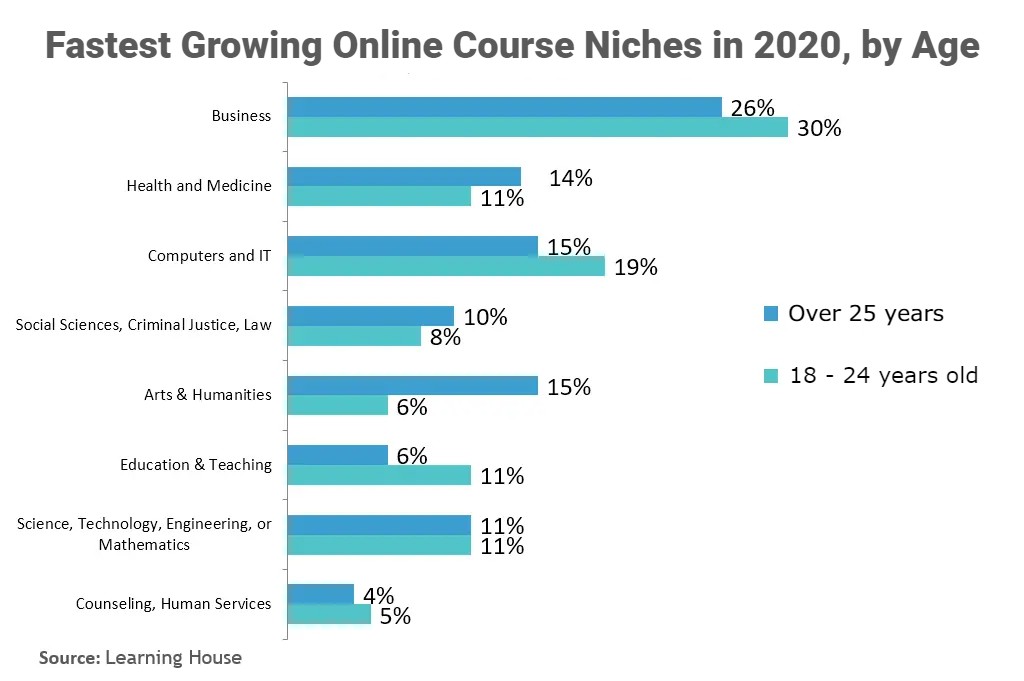How To Create An Online Digital Course In As Little As 24 Hours
Table of Contents
If you’ve been trying to make an income online, you’ve probably thought of creating an online course. The good news is, it’s not as hard as you may have imagined. You can even do it in a short time frame, in some cases a very short time.
Creating a digital course can assist your clients to achieve their desired results faster. It can also be a part of a great overall marketing strategy. And it will help raise your profile and establish you as an authority on the subject you teach about in your course.
It can also be a great source of income. One without you needing to do the work over and over again. You do it once and, besides the occasional update, it’s done and will continue to help you generate more income.
It will also help your clients to meet their goals without needing all that extra time in coaching sessions. Leaving them feeling satisfied that you have helped them attain the state they aspire to.
A course can supplement your coaching sessions and help clients achieve their outcomes faster than with coaching alone.
Coming up with a course idea isn’t as hard as you may think. Creating the course can take as long as you like. It can take little as a day, that’s right, just a day.
Or, you can go more in depth and create a more comprehensive course. Which you will be able to charge more for, but it will require more planning. You’ll also have to create more course content to ensure you have all your bases covered, and all relevant topics are included.

Coming Up With A Course Idea
The first step is deciding on the topic for your course. You may think you don’t have the expertise, but chances are you use skills every day that you could use to create a course. You likely take for granted, skills you have that others can learn from. Remember, you just need to be one step ahead of the student in order to teach them something valuable. But back to creating ideas, you may wonder what to cover.
But, once you get started, it can be easy to end up with too many ideas. We’ve all been there when writing a blog post. We end up with a 3,500 word post that covers sub topic after sub topic and really strays from the main subject, which should be the main focus.
When coming up with an idea for a course, usually one idea leads to another, then another. Before you know it, you have a ton of ideas for content that may not be relevant to the central topic of the course. Most people don’t want all the answers to every question in the world, they just want the relevant information. The solution to their very specific problem.
So, keep it simple, address one problem with one solution. Otherwise, you run the risk of overwhelming your students who may end up leaving the course, never to return. Not because you aren’t good at teaching, but because they feel like they aren’t good enough to understand or navigate all that content.

Diversify The Solutions You Provide
When you are focused on a single problem you can dig deeper and provide extra information in the form of some content types including the following which are suitable for online course content:
- Worksheets
- White papers
- Case studies
- Checklists
- eBooks
- Planning documents
- Video files
- Live video or webinars
- Audio files
- Podcasts
- Action guides
- Slide presentations
- Canva presentations
- Infographics
- PDF downloads
- Transcripts of video and audio content

9 tips to help you find the right idea for your digital course:
Have a look at what the competition is doing.
Chances are, if they serve a similar audience to yours then similar topics may work for you too. If you are worried about selling the same course as they are, don’t worry about that. You have your own unique voice, personality, teaching style and experience. Your content will differ from theirs even if you are covering the same topic.
You are unique and for the right people you are the one who that your ideal audience will resonate with the most. Refer back to your unique selling proposition and remember what sets you apart.
- Look at your ideal client or buyer persona.
What is it they are interested in? What questions are they asking you in private emails or in the comments on your blog?
Check Google Analytics for what blog posts are the most popular and get ideas from there.
These are all valuable sources of information for you to figure out what they may like to learn about.
- Ask around to narrow it down.
If you still aren’t clear on what they might be interested in learning, you can just ask. Create a survey asking them what problems they are facing.
Try to figure out what their pain points are by teasing them out with your survey questions. You can even ask directly one on one questions when you have contact with your clients.
- Check the contents page of bestsellers within your niche.
What books are doing well in your niche? Likely it’s the ones which solve your client’s problems. Ones that answer their questions. Browse the bestsellers list and go to the contents page to look at what topics are being covered in the book.
This is a great source of ideas for your new course. Don’t copy anyone else’s work, just gather some ideas of what you may need to cover in your course.
Check out the reviews to see what your ideal client is saying about the book. Have they had any questions that were left unanswered?
Or have they identified gaps in the knowledge provided? Are they asking for more information on certain topics? Take note of what people are interested in learning about.
- Check out your competitor’s FAQs and Facebook Groups.
Look at competitor blogs, on Facebook groups and in forums for the frequently asked questions section.
Also check blogs for “begin here” areas, as these may answer some of the more commonly asked questions. Some website home pages will have a list of the pillar topics they cover and links to the relevant pages, which then link to the posts that cover all the subtopics. These might be a useful source of information, just by looking at the headlines you will get an idea of some topics to explore.
- Look at the resources available to you.
What are the resources your colleagues and competitors are using or recommending?
Often with tools and software there are questions you may be able to answer which will make good content for your course. You can teach people how to use these tools properly, using screen share software to walk them through any processes they need to know.
- Check your email for some insight or inspiration.
Chances are if you have had email for any length of time, people, like friends or clients, will have sent you emails asking questions. Look for recurring themes and relevant questions you can answer as part of your course.
- Do some keyword research.
You may have already done keyword research for your blog posts. This is a good source of information.
What are the key phrases and questions your ideal audience is searching for? You could use those as a source for content for your course.
- Google Webmaster tools
This free tool provided by Google show you the search terms you are ranking for. These could be a great place to start for topics to include in your course. People search in terms of questions, i.e. “how to create a logo?’ these can be a great source of information for you to know what answers they are looking for.
There are ideas everywhere, don’t let insecurities hold you back. Look for the questions your target audience is asking and answer them in your course.

You Have A Topic, Now What Delivery Format To Use?
Delivering the course can be as easy as an email drip sequence, or it can be more complicated like in a membership site, that will include different types of content and usually require you to be available to students at least some time.
Still, there are dozens of ways to deliver the content itself. Video, written word, audio, live, with a Facebook group, without one. There is so many options. We will go into this further after taking a few things into consideration.
When deciding on how to deliver your course, there are 3 main things to think about:
Your Ideal Client
Like everyone, your ideal client has a preferred method of learning. Some people learn better by watching video content, others by doing. Some people can listen to audio and pick up the concepts while doing other things.
If you want to keep it simple, or you know what you think their preferred learning style is, go with that. Otherwise, a safe bet is to mix it up and provide content in different formats. Then there is something to suit everyone’s learning style. Supplement videos with checklists or worksheets, provide transcripts for audio, etc. Repurpose your content to help you create more while not having to do too much additional work.
Your Content
Some content lends itself well to certain formats and not so well to others. For example, if you are trying to explain how to use software or online tools, it is harder to do without using screencasting. Similarly, if there is a step-by-step process your client must work through, then a worksheet is a great place to start.
Tip: Having a transcript of your videos will help you create more content too, because you will have it all in the written word, which you can use in articles or to create case studies etc.
Your Comfort Zone and Expertise
Your clients’ needs should be your biggest consideration. But, your preferred method of delivery matters too. If you don’t feel comfortable doing video, then it may not be the right fit for you. Although, remember that there are ways to deliver video content without your face appearing in it.
However, if it’s going to cause you unnecessary stress, then it probably isn’t the right option for you.
The same goes for writing. If pumping out tons of written content isn’t your thing, you shouldn’t force yourself to write 50 pages of written content. It’s only going to end up being a frustrating experience for you.
Ideally, you will find some balance. Somewhere in the middle of what your talents are, when it comes to content, and what your clients need from you.
Delivery of the Course Content
Besides format type, you will have to consider how this content will be delivered. You can easily create an email drip sequence through your email marketing provider. Then send out the content directly to the client’s inbox. Or you could set up a full membership site, which will take a bit more effort. This method is best for courses include many kinds of formats. There is also course platforms available at a cost. Or you can host the content on your website and keep it password protected or use a plugin to keep it separate from your usual blog posts so only paying clients will see it.
Another option is to provide them with a zip file containing all the files, which can be done by direct download or via email. I have seen content delivered through Dropbox or Google Drive folders, even. This can be an option if there isn’t too much content that might overwhelm your clients or fill up the memory on their device.

Now Let's Talk Pricing Strategy
A big part of creating digital products, including courses, is that they will generate income for you. Even after the initial effort that you put in, it can continue to generate revenue.
You will need to decide how much you will be charging for your course. Don’t let deciding on a pricing structure be something that causes you to put off creating or launching your course, it doesn’t need to be so difficult.
Firstly, ask yourself how much do you want to earn?
You will need to take into consideration things including the following factors:
- Time invested: How much time you have put into planning and creating the course.
- Monetary investment: Did you pay writers, editors, developers or anyone else to create content?
- Cost of sales: will you be using affiliates? You will need to take into consideration their commission in the price of your course.
- Projected sales: How many sales can you expect to make?
What is the ROI for the Customer?
Besides taking into consideration your initial investment in creating the course. It is also important to take into consideration the return on investment your clients will receive from doing your course.
For example, if your clients can expect to see an increase of income to the tune of $2500 per month, then charging $4500 for the course is not unreasonable.
It is the action takers who will reap the benefits for putting the techniques and ideas that you are teaching into practice. And people who pay more are more likely to take action.
How Committed are Your Buyers?
The higher the cost of the course, the more likely clients are to complete it, and actually do the suggested work. The higher the price point, the higher the investment will be on the part of your client.
- They will be more likely to complete the course the more they pay
- They will also be more likely to action the steps outlines in the course
If you have case studies showing how they can get return on investment from doing your course, and you know that if they put into action the steps outlined in the course, it’s reasonable to charge a higher price for it.
Ask yourself if it is fair to make the price higher in order to buy commitment from your clients? If you think it is, then go with that.
How Exclusive is the Content?
It’s easy to think that there isn’t anything that hasn’t been done before, perhaps more than once. However, there is lots you can do to make your course stand out from the crowd.
- Presenting the information in an unexpected and new way
- Use graphics and design to set your course apart. Include diagrams, graphs, charts, cover art and other graphic elements
- Make sure you include step by step worksheets and checklists or planners
- Providing live presentations and recording them for future participants to see, live videos often add a touch of personality to them making them more engaging and different to the usual recorded content
At the end of the day, pricing your course may come down to making an instinctive decision. There are some numbers that are known to be more likely to convert your audience into buyers. That’s why you often see products around the $97 mark or $997 or on the other end of the scale $7 or $19. There is something about those numbers that attracts more buyers.
Ultimately it’s your content, and you know you and your audience best. Whatever you do, don’t let pricing be a factor in putting off launching your course.

Building a Course in Just a Day
You might be thinking you don’t have the time to create a course. I’m here to tell you to think again. Many courses available for sale were built in just one day.
If you’ve been in business for more than a short time, even just a few weeks, you already have what you need to create a course that could be ready to sell by tomorrow. The skills you have already developed can be learned by others who haven’t come as far as you yet.
As they say, to teach someone, you just need to be one step ahead of the person you are teaching in order to be a valuable teacher. It’s just a matter of putting all the pieces together.
Focus on Your Strengths
Either, you could spend the next few weeks researching new strategies, testing ideas and developing a new course. Or, you could give this tried and tested strategy to develop a course that’s proven to work. It’s simple, write what you know.
It can be easy to take for granted the skills that you have as you use them daily and don’t even think twice about it, but there are many people out there who would pay for that knowledge that you have and use regularly without even thinking twice.
You write blog posts, answer emails, listen to podcasts. You read books about the subject matters you are interested in on a regular basis. So, these are the topics you would easily be able to talk about. All of those things can make it easy for you to be able to create a course on your chosen topic.
You just need to be able to talk about your chosen topic or write about it, depending on how you intend on delivering the course. Before you know it, you will have your very own course. It may seem like it was created from nothing, just by using the knowledge you already have.
Repurposing Content
If you have a blog or email list, or especially if you have already created a course, you have a wealth of knowledge and content to draw from to create your new course.
Sort through your emails and blog posts for those little nuggets of valuable info that you can polish, refine and repurpose. Check out your old courses for classes and resources you can use in your new course. Just update the relevant information and reformat it to match the new course design. Then use that value to add to the course you are creating now.
If you are worried that your clients may have read the blog posts and seen the information before, don’t be. Most people are happy to pay if they can find all the relevant information in one place, without having to spend hours scouring the internet to find what they are looking for.
Even if your entire course is built upon previously published blog posts, people will be happy to pay for a proven step by step method to get the outcome they are seeking. It’s the convenience they are paying for. It may just mean charging a lower fee than if you were to create all new, fresh content. Again, it’s about finding a balance.
Re-brandable Content
If you have done most of the work on your course and are finding there are holes in your content, you can buy private label rights (PLR) content. This is a touchy topic among many circles of content creators, so you may choose to skip this tip. But for some people, it will provide the right solution for them to finish off their course without headaches.
Again, not everyone loves the idea behind this method, so be aware of that. You buy the rights to the PLR content, and you can then use as your own content as you see fit. Usually it is recommended you go through and rewrite the content so it’s in your voice. For some people, it is a good option. It may be for you if you are aiming to get the course completed in as little time as possible.
You can find well researched content in a range of formats, from video to written word and worksheets or planners that you can use yourself in your own course. Make it your own as you have purchased the rights to it. You want to make sure it fits your style. This can help you create a more well-rounded course without much extra effort on your part.

Start With The Basics
Particularly for your course you want to create in a day, start with an introductory course covering the basics. In other words, only cover the fundamentals in your course.
Let’s be real, you aren’t going to be able to cover everything in a course built in one day. But you can do a good job of covering the basics and provide an introductory course on your chosen topic.
This type of course is good to aim at the top of the funnel clients who are looking to find out more about a given topic but aren’t ready to invest a large sum of money on a course.
You can always go back and expand on it later and create a more in-depth course to follow up from it.
What Now?
Start by brainstorming ideas for your course, listing all the things you are good at. Even the things you take for granted. Then go and validate your ideas. Look for what your target audience is asking about and find the overlap.
After that, it’s time to get started on creating your course. Decide on how you will deliver it and start creating and finding content to add to it.
You may decide to hire outside help to create the course. Or, you may do it all yourself.
Most of us have phones or webcams that are good enough to record video content on. For written content, you can use a program like Canva or Photoshop to make it more attractive.
If it’s appealing to the eye, students will be more likely to utilize things like worksheets and handouts. Use screen capture software to make it easier for your audience to follow along with your instructions.
Figure out the logistics of it all, especially if you are going to go for a more in-depth course than one you can make in a day. But, remember, if you do create your course in a day, that’s great! So long as you are providing value and helping students to learn and reach their learning outcomes, you will be doing someone a service.
After all this, you will be able to market and sell your course for a long time to come. Effectively creating passive income for yourself, long term, while helping your clients. What more could you ask for?
A course is definitely something worth considering, if I haven’t already convinced you that it’s worth doing. The sooner you begin, the faster you can launch. After that, you can market and sell your course. Allowing you to make real money in return for your efforts. Not to mention the new-found position as an expert you will have earned as well as helping more clients.
I think it’s an all-round winner. Especially once the initial work is done, and you are just reaping the rewards.



Hosting a group giveaway is a guaranteed way to multiply the number of subscribers on your list in a relatively short time frame. All that’s required is some proper planning, organization and the right tools. I’m going to walk you through it. Keep Learning >

You could be the best coach in your field, but how are people supposed to know that? I’m here to help you get the attention you deserve. Follow my five golden rules of publicity, and you’ll be promoting yourself like a pro in no time. Keep Learning >



